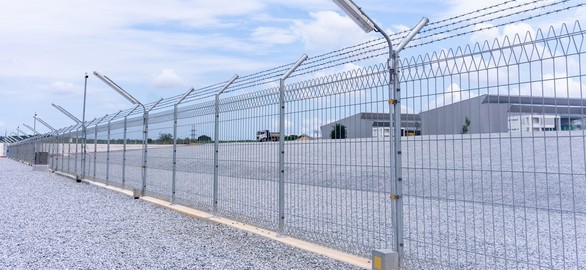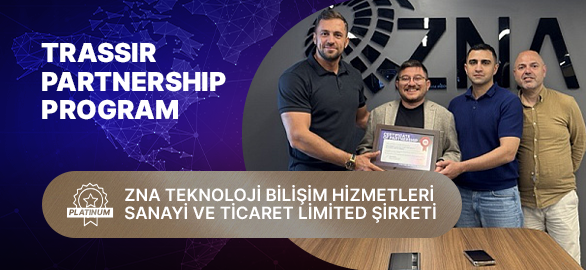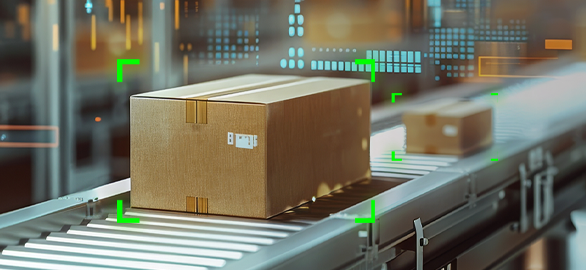

Arguments in favor of Facial Recognition system: why do we need this technology?
The right to privacy in the era of increasing video surveillance and smart video analytics integration into daily life raises serious concerns among public movement leaders and government officials worldwide. Some studies conducted by independent experts in various countries have questioned the overall effectiveness of using this technology. What are the future prospects of using facial recognition technology, and why are the arguments of its opponents unfounded?
Reasons for the Critical Attitude Towards Facial Recognition Technology
Although privacy concerns and the accuracy of various recognition systems have always been inherent to any biometric solution, this issue did not provoke serious public debate until recently. Matters became more complicated after it was revealed that the facial recognition system used by police in South Wales mistakenly identified over 2,000 people as potential criminals. The system’s false positive rate reached an unprecedented 92%.
The situation worsened following the publication of a report on the performance of facial recognition systems used by London police. It turned out that such systems classified 96% of people captured by video cameras as potential criminals.
Both cases sparked widespread public outcry and catalyzed discussions about the legitimacy and effectiveness of facial recognition technology beyond the UK.
In May 2019, San Francisco, California, became the first American city to legally ban the use of any facial recognition solutions within its jurisdiction. Notably, the voting among officials showed a clear majority: 8 out of 9 votes favored the ban. Soon after, the authorities of Somerville (Middlesex, Massachusetts) followed suit. Recently, Oakland, the largest city in Alameda County, California, became the third U.S. city to support the ban on facial recognition systems.
These events led even major tech companies like Microsoft and Amazon to express concerns about the potential misuse of the technology.
Arguments in Favor of Facial Recognition Technology
Many experts and some public representatives argue that the benefits of the technology significantly outweigh its drawbacks when it comes to ensuring safety and combating crime. After all, if the system mistakenly identifies 100 people as potential suspects but helps catch one real criminal who could harm thousands, isn’t that worthwhile?
And this is not the only argument. Experts point out that the methodology used in the aforementioned studies is flawed and has many shortcomings.
Take, for example, the case with South Wales police using facial recognition systems for security purposes.
If we closely examine the statistics presented to the public, they can be interpreted in different ways. In the worst-case scenario, if 2,470 innocent people and only one criminal passed in front of the cameras, the false positive rate would be the 92% reported in the study.
However, this result is actually unlikely. A more plausible scenario would be that tens of thousands of people passed in front of the cameras. Meanwhile, there were probably hundreds of faces in the suspect database simultaneously.
Assume that out of 170,000 people in the monitore
d area, 100,000 faces were detected and recognized by the surveillance cameras, and the list of wanted criminals contained only one individual. In this case, the false positive rate of the system would be just 2.3%.
In reality, there would be far more people on the wanted list than just one. Additionally, a person might appear in front of several different cameras, and each occurrence would initiate a search in the database.
Obviously, the actual performance of the system would be significantly higher.
To make a well-founded conclusion, it is necessary to have a complete set of data. Without knowing the exact size of the wanted list, the actual number of people detected by the cameras, and how many of those people were matched with the database, it is impossible to accurately determine how well the system works.
Regarding the claims of inaccuracies and a high number of errors in the operation of facial recognition systems: out of thousands of potential suspects, the system managed to narrow down the number of people needing verification to a minimum, and most of the false positives indicated in the study occurred during the analysis of such a large data set.
Thus, without using the facial recognition system, the police would not have been able to narrow down the circle of suspects to a few individuals. All that remained was to identify and thoroughly check the people on this list.
Let’s consider another example. Imagine you have 1,000 people, among whom there are 6 criminals. You don’t have the time to manually check each one, so you use an automated facial recognition system that narrows down the circle of potential suspects, selecting 10 people from the crowd for verification. As a result, you find that 5 out of these 10 people are the criminals you were looking for.
Do you think this is a good result or not?
In this situation, the law enforcement officer had to conduct an evaluation to make a final decision on whether any of these individuals were criminals. The system’s false rejection rate (FRR) was just 1/1000 = 0.1%. The false acceptance rate (FAR) here was 5/1000 = 0.5%.
In this case, the recognition accuracy is not 50% (five out of ten people selected by the recognition system turned out to be criminals) but much higher. When summarizing the results, it is essential to consider that initially, 1,000 people needed to be evaluated.
Conclusion
Thanks to the use of the Facial Recognition system, the circle of suspects was narrowed down to 10 people in a matter of seconds. Without using an automated facial recognition solution, it would have been simply impossible to identify the five criminals among these people.
And in many cases, this can prove to be far more important than the inconveniences caused. After all, we are talking about human lives saved precisely because of the use of facial recognition systems.
Their widespread adoption could become the factor that takes public safety to a new level.
What's New?
All news
Strengthening Traffic Monitoring for Adıyaman Besni District Gendarmerie with TRASSIR
Strengthening Traffic Monitoring for Adıyaman Besni District Gendarmerie with TRASSIR

Integrated Intelligence: TRASSIR & Suprema for Smarter Security and Access
Integrated Intelligence: TRASSIR & Suprema for Smarter Security and Access

How to Choose the Right Surveillance Cameras for Retail: Zone-Based Guidance with DORI Standards in Mind
How to Choose the Right Surveillance Cameras for Retail: Zone-Based Guidance with DORI Standards in Mind

Welcoming Our New Platinum Partner: BİSAVUNMA GÜVENLİK VE RADAR SİSTEMLERİ SANAYİ TİCARET LİMİTED ŞİRKETİ
Welcoming Our New Platinum Partner: BİSAVUNMA GÜVENLİK VE RADAR SİSTEMLERİ SANAYİ TİCARET LİMİTED ŞİRKETİ

How TRASSIR’s PRO Dual Light Cameras Help You Work Faster and Smarter
How TRASSIR’s PRO Dual Light Cameras Help You Work Faster and Smarter

No More Blind Spots: How TRASSIR Reduces Losses and Investigation Time in Warehouses
No More Blind Spots: How TRASSIR Reduces Losses and Investigation Time in Warehouses

Welcoming Our New Gold Partner: DG Bilgisayar ve Yazılım Destek Hizmetleri
Welcoming Our New Gold Partner: DG Bilgisayar ve Yazılım Destek Hizmetleri

Beyond the Perimeter: How TRASSIR Protects What’s Outside Your Factory Walls
Beyond the Perimeter: How TRASSIR Protects What’s Outside Your Factory Walls

Welcoming Our New Platinum Partner: KARE BİLGİSAYAR SANAYİ VE TİCARET ANONİM ŞİRKETİ
Welcoming Our New Platinum Partner: KARE BİLGİSAYAR SANAYİ VE TİCARET ANONİM ŞİRKETİ

TRASSIR Launches New Cameras with Dual Illumination to Reduce Incident Investigation Time
TRASSIR Launches New Cameras with Dual Illumination to Reduce Incident Investigation Time

Welcoming Our New Platinum Partner: ZNA TEKNOLOJI
Welcoming Our New Platinum Partner: ZNA TEKNOLOJI

Keeping Things Moving: How TRASSIR Helps Logistics Run Smoothly
Keeping Things Moving: How TRASSIR Helps Logistics Run Smoothly

Welcoming Our New Platinum Partner: LION TECHNOLOGY
Welcoming Our New Platinum Partner: LION TECHNOLOGY

New Success Story: Industrial-Grade Security at Mirbey Plastik
New Success Story: Industrial-Grade Security at Mirbey Plastik

AI-Powered Insights for Retail Security in Türkiye: How TRASSIR’s intelligent video analytics transform retail surveillance
AI-Powered Insights for Retail Security in Türkiye: How TRASSIR’s intelligent video analytics transform retail surveillance

Our First Step into Global Retail: Highlights from Retail Days 2025
Our First Step into Global Retail: Highlights from Retail Days 2025

Transforming Campus Safety: TRASSIR’s Proactive Approach to Protection
Transforming Campus Safety: TRASSIR’s Proactive Approach to Protection

Smarter Surveillance, Smoother Manufacturing
Smarter Surveillance, Smoother Manufacturing

TRASSIR Solutions to Be Featured at Securex South Africa 2025 by neaMetrics
TRASSIR Solutions to Be Featured at Securex South Africa 2025 by neaMetrics

Success Story: Smarter Access Control at Hilton Istanbul Bomonti
Success Story: Smarter Access Control at Hilton Istanbul Bomonti
Try TRASSIR For Your Business
Learn more about how TRASSIR analytic modules work! Demo mode is an opportunity to see for yourself how the system works, and also check the interface and test all the functions.Success!
We will contact you as soon as possible